In contemporary art, digital collage stands as a vibrant and versatile medium that merges traditional artistry with technological innovation. It’s a creative process that enables artists to seamlessly blend various visual elements. Digital collage allows artists to transcend the limitations of physical space and materials. This comprehensive guide aims to inform you what digital is by exploring the history, techniques, and significance of digital collage the modern artistic landscape.
Before we begin, I have written a lot of blog posts about digital collage, these are some of the more popular blog posts….
- What Is Digital Collage
- How To Make Digital Collages
- Digital Collage Tips and Tricks
- Digital Collage Trends: Exploring Styles and Techniques
- Copyright and Collage: Navigating Legal Aspects
Understanding Digital Collage
Digital collage is a form of visual expression that involves the assembly of images, textures into a cohesive composition using digital tools and techniques. Unlike traditional collage, which relies on physical materials, digital collage harnesses the power of digital software. This could be software such as Adobe Photoshop, GIMP, or Procreate. Artists use this software to manipulate, layer, and blend visual elements with precision and fluidity.
Learn more about digital collage software, here.
History and Evolution
The roots of digital collage can be traced back to the emergence of digital art in the late 20th century. Coinciding with the rise of personal computing and graphic design software. As digital technology advanced, artists began to explore new avenues of creativity. While experimenting with the possibilities offered by digital tools to create art, digital was born. This advancement pushed the boundaries of traditional techniques.
One of the pioneering figures in digital collage is British artist Peter Kennard. He is known for his politically charged photomontages created using analog and later digital methods. Kennard’s work, which often addresses social and environmental issues, exemplifies the power of digital collage. As an artist he is using the medium for social commentary and activism.
Techniques and Process
The process of creating a digital collage typically begins with gathering source materials. These can can range from photographs and illustrations to textures and digital graphics. Artists may source images from their own photography, online repositories, or stock image libraries. This is all depending on their creative vision and requirements.
Once the source materials are collected. Artists use digital software to manipulate and arrange the elements, experimenting with composition, scale, colour, and texture. Layering is a fundamental aspect of digital collage. It allows artists to build depth and complexity within their compositions by stacking and blending multiple images and graphics.
Tools such as selection, layer masks, blending modes, and adjustment layers are essential for refining and fine-tuning the collage. They enable artists to seamlessly integrate disparate elements while maintaining visual cohesion. The iterative nature of digital collage allows for endless experimentation and refinement. This empowers artists to explore new ideas and creative possibilities with each iteration.
Themes and Styles
Digital collage encompasses a wide range of themes, styles, and artistic expressions. This reflects the diverse interests and perspectives of contemporary artists. From surreal and abstract compositions to narrative-driven storytelling. Digital collage offers a versatile platform for exploring concepts such as identity, memory, politics, and culture.
Some artists use digital collage as a means of self-expression. By incorporating personal experiences and emotions into their work to create intimate and introspective compositions. Others draw inspiration from popular culture, history, or current events, using collage as a tool for social commentary and critique.
The Future of Digital Collage
As technology continues to evolve, the future of digital collage holds boundless potential for innovation and experimentation. Advancements in artificial intelligence, virtual reality, and augmented reality are opening up new avenues for artistic exploration. This is allowing artists to push the boundaries of traditional mediums. The redefinition of the collage in the digital age is currently happening during our time.
Moreover, the democratisation of digital tools and platforms is empowering a new generation of artists. Artists with disabilities who could not partake in traditional collage are now able to experiment. This is fostering a vibrant and inclusive creative community. Whether it’s shared on social media, exhibited in galleries, or integrated into multimedia projects, digital collage continues to captivate audiences. It inspires new dialogue, showcasing the enduring power of creativity in the digital era.
Conclusion
In conclusion, digital collage represents a dynamic and evolving form of artistic expression. It is bridging the gap between traditional craftsmanship and digital innovation.
By blending diverse visual elements with precision and imagination, artists create compositions that challenge our perceptions. Digital collage evokes emotions, and invites us to explore the boundless possibilities of the digital canvas.

